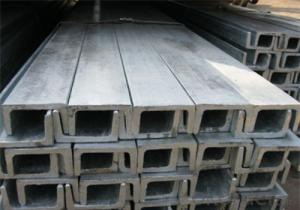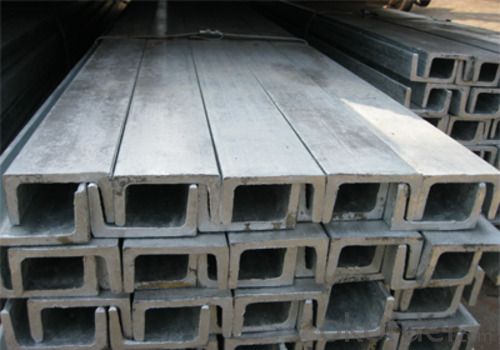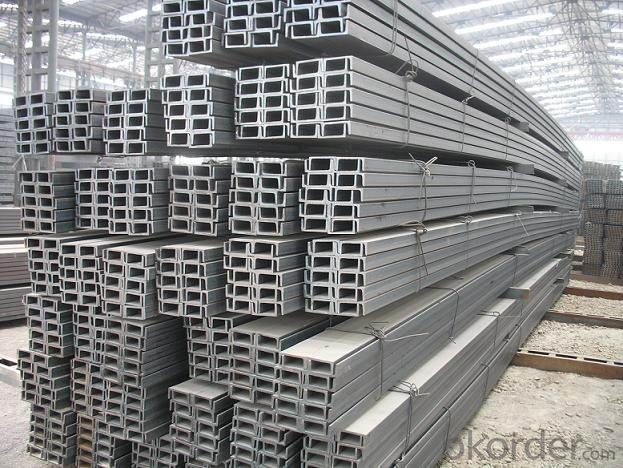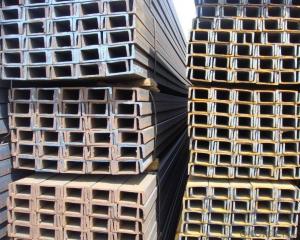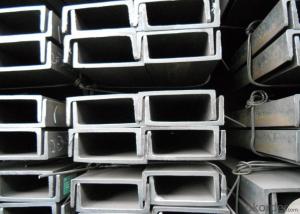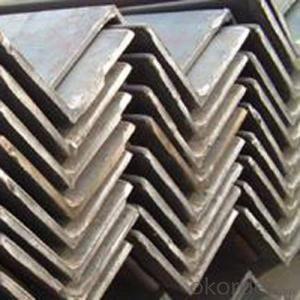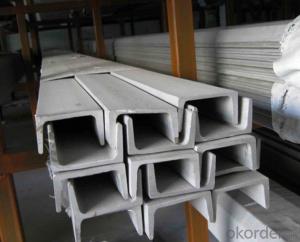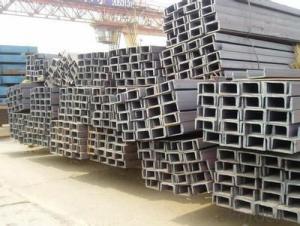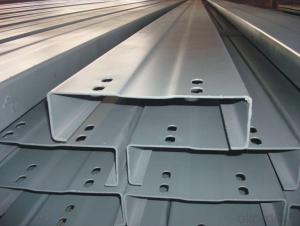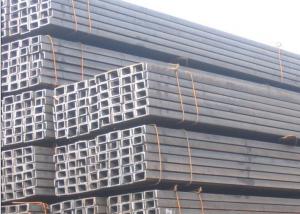Channel Steel JIS Hot Rolled without Tolerance
- Loading Port:
- Tianjin
- Payment Terms:
- TT or LC
- Min Order Qty:
- 28 m.t.
- Supply Capability:
- 35000 m.t./month
OKorder Service Pledge
OKorder Financial Service
You Might Also Like
Product Description:
OKorder is offering Channel Steel JIS Hot Rolled without Tolerance at great prices with worldwide shipping. Our supplier is a world-class manufacturer of steel, with our products utilized the world over. OKorder annually supplies products to European, North American and Asian markets. We provide quotations within 24 hours of receiving an inquiry and guarantee competitive prices.
Product Applications:
Channel Steel JIS Hot Rolled without Tolerance are ideal for structural applications and are widely used in the construction of buildings and bridges, and the manufacturing, petrochemical, and transportation industries.
Product Advantages:
OKorder's Channel Steel JIS Hot Rolled without Tolerance are durable, strong, and resist corrosion.
Main Product Features:
· Premium quality
· Prompt delivery & seaworthy packing (30 days after receiving deposit)
· Corrosion resistance
· Can be recycled and reused
· Mill test certification
· Professional Service
· Competitive pricing
Product Specifications:
1.channel steel: ss400/q235/st37-2/a36/s235jr
2.channel steel 5.8/6/9/12m
3.LC payment channel steel
4.delivery within 25 day
1.channel steel: ss400/q235/st37-2/a36/s235jr
2.channel steel 5.8/6/9/12m
3.LC payment channel steel
4.delivery within 25 day
We supply high quality Channel steel with reasonable price. Including Chinese standard, Japanese standard and so on.
Material: SS400, ST37-2, A36, S235JRG1, Q235, Q345 etc.
size
(mm)thickness (mm)thickness (mm)weight (kg/m)50*253.00~5.006.002.37~3.4675*403.807.005.3075*404.007.005.6075*404.507.005.8575*405.007.006.92100*503.806.007.30100*504.206.008.03100*504.507.508.97100*505.007.509.36125*655.206.8011.66125*655.306.8012.17125*655.508.0012.91125*656.008.0013.40150*755.507.3014.66150*755.7010.0016.71150*756.0010.0017.90150*756.5010.0018.60150*759.0012.5024.00200*807.5011.0024.60200*908.0013.5030.30250*909.0013.0034.60300*909.0013.0038.10
Standard: GB/JIS/EN/ASTM/DIN and others.
Packing: In Bundle,Fasten by wire rod with tags.or according to client's requests.
Length: 6meter, 9meter, 12meter
Chinese standard size: 50*37*4.5mm -400*104*14.5mm
Japanese standard size: 50*25*3mm-300*90*13mm
FAQ:
Q1: Why buy Materials & Equipment from OKorder.com?
A1: All products offered byOKorder.com are carefully selected from China's most reliable manufacturing enterprises. Through its ISO certifications, OKorder.com adheres to the highest standards and a commitment to supply chain safety and customer satisfaction.
Q2: How do we guarantee the quality of our products?
A2: We have established an advanced quality management system which conducts strict quality tests at every step, from raw materials to the final product. At the same time, we provide extensive follow-up service assurances as required.
Q3: How soon can we receive the product after purchase?
A3: Within three days of placing an order, we will begin production. The specific shipping date is dependent upon international and government factors, but is typically 7 to 10 workdays.
Images:
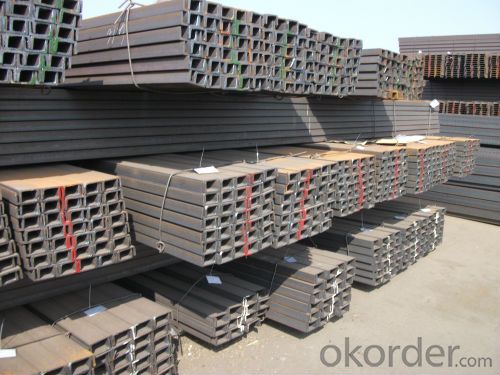
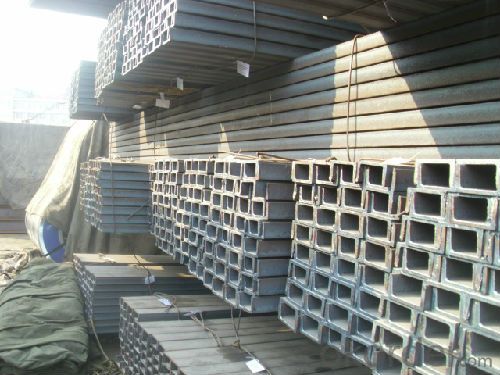
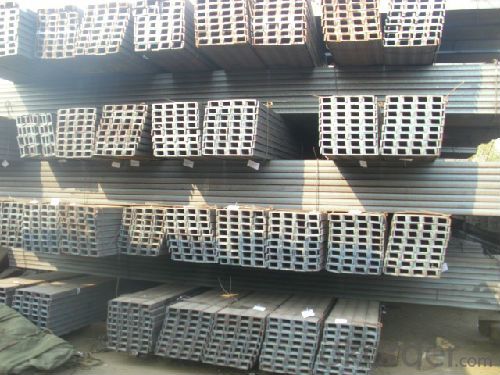
- Q: What are the common fastening methods for steel channels?
- There are several common fastening methods for steel channels, depending on the specific application and requirements. Some of the most common methods include: 1. Welding: Welding is a commonly used fastening method for steel channels. It involves melting the metal at the joint and then allowing it to solidify, creating a strong bond. Welding provides excellent strength and durability, making it ideal for heavy-duty applications. 2. Bolting: Bolting involves using bolts or screws to secure the steel channels together. This method is relatively quick and easy to implement, and it allows for disassembly and reassembly if needed. Bolting is commonly used in applications where a more flexible or adjustable connection is required. 3. Riveting: Riveting is another fastening method for steel channels, involving the use of rivets to hold the channels together. Rivets are inserted through pre-drilled holes and then deformed to secure them in place. Riveting provides a strong and permanent connection, making it suitable for applications that require high strength and stability. 4. Adhesive bonding: Adhesive bonding is a fastening method that uses industrial adhesives to join the steel channels. This method provides a clean and aesthetically pleasing appearance, as it does not require visible fasteners. Adhesive bonding can be an effective option for applications where a strong connection is needed, and where welding or other methods may not be suitable. 5. Clamping: Clamping involves using clamps or brackets to hold the steel channels together. This method is often used for temporary or adjustable connections, as it allows for easy disassembly and repositioning. Clamping can be a quick and convenient option, but it may not provide the same level of strength and stability as other methods. Overall, the choice of fastening method for steel channels depends on factors such as the specific application, required strength, ease of installation, and the need for adjustability or reusability. It is important to consider these factors and consult with experts to determine the most suitable fastening method for a particular project.
- Q: What are the considerations for steel channel connections to timber structures?
- When considering steel channel connections to timber structures, there are a few important factors to take into account. These considerations include the compatibility of materials, load capacity, joint design, and potential for corrosion. First and foremost, it is crucial to ensure that the steel channel and timber are compatible materials. This involves assessing the mechanical properties of both materials, such as their strength and stiffness. Additionally, any potential chemical reactions between the materials should be considered to avoid corrosion or degradation. The load capacity of the connection is another crucial consideration. The steel channel must be able to support the anticipated loads without compromising the structural integrity of the timber. This requires a thorough analysis of the applied loads, including static and dynamic forces, as well as any potential impact or wind loads. The design of the joint is also critical for a successful connection. The steel channel should be properly sized and positioned to distribute the loads evenly across the timber members. This may involve using appropriate fasteners, such as bolts or screws, and ensuring that they are properly installed and tightened to achieve the desired level of connection strength. Finally, the potential for corrosion should be carefully evaluated. Steel is susceptible to corrosion when exposed to moisture or chemicals, which can weaken the connection over time. Proper protective measures, such as galvanizing or coating the steel channel, should be considered to prevent corrosion and extend the lifespan of the connection. Overall, when connecting steel channels to timber structures, it is essential to consider material compatibility, load capacity, joint design, and corrosion prevention to ensure a safe and durable connection. By addressing these considerations, the connection can effectively transfer loads and maintain the structural integrity of the timber structure.
- Q: Can steel channels be used for conveyors?
- Certainly, conveyors can utilize steel channels. In conveyor systems, steel channels are usually employed to furnish structural reinforcement and steadfastness. They frequently serve as the backbone for the conveyor system, furnishing a robust foundation for other constituents like rollers, belts, and motors. Steel channels present exceptional strength, durability, and resilience to deterioration, rendering them appropriate for managing substantial loads and extended periods of operation. Furthermore, steel channels can be conveniently personalized and manufactured to accommodate precise conveyor needs, offering versatility in both design and installation.
- Q: What are the different methods of protecting steel channels from corrosion?
- To safeguard steel channels from corrosion, there exist multiple techniques. These techniques can be classified into surface coatings, cathodic protection, and alloying. Surface coatings are commonly utilized to shield steel channels from corrosion. These coatings establish a barrier between the steel and the corrosive surroundings, obstructing direct contact and thus hindering corrosion. Among the frequently employed surface coatings are paint, epoxy, zinc-rich coatings, and galvanizing. Cathodic protection stands as another efficacious method for safeguarding steel channels against corrosion. It entails introducing a sacrificial anode, generally composed of zinc or magnesium, which is more reactive than the steel itself. As a result, the sacrificial anode corrodes instead of the steel, effectively protecting it from corrosion. Cathodic protection can be achieved through galvanic systems or impressed current systems, depending on the specific application. Alloying serves as a means of safeguarding steel channels by modifying their composition. By incorporating elements like chromium, nickel, or molybdenum, the corrosion resistance of the steel can be significantly improved. Stainless steel, for instance, is an alloy that contains a high concentration of chromium, which forms a protective oxide layer on its surface, rendering it highly resistant to corrosion. It is essential to acknowledge that the selection of the suitable method for protecting steel channels from corrosion relies on various factors, including the corrosive environment, the intended usage of the channels, and budgetary constraints. Consulting corrosion experts and engineers plays a crucial role in determining the most appropriate method for each specific application.
- Q: Can steel channels be used for catwalks?
- Indeed, catwalks can make use of steel channels. Steel channels are frequently employed in the construction industry due to their robustness and resilience. They offer a steady and reliable surface for walking, which renders them highly suitable for catwalks. Moreover, steel channels can be conveniently tailored and manufactured to correspond to precise design specifications, including dimensions, capacity to bear loads, and length. This adaptability makes them highly versatile for a wide range of catwalk applications.
- Q: Can steel channels be used for fencing applications?
- Yes, steel channels can be used for fencing applications. Steel channels provide strength, durability, and stability, making them suitable for fencing purposes. They are commonly used as posts or horizontal supports in fencing systems, providing a robust framework for the fence panels.
- Q: What are the different fabrication methods for steel channels?
- Some of the different fabrication methods for steel channels include hot rolling, cold rolling, extrusion, and welding.
- Q: Can steel channels be used for structural support?
- Yes, steel channels can be used for structural support. Steel channels have excellent strength and load-bearing capabilities, making them suitable for various structural applications such as supporting beams, columns, and frameworks in buildings, bridges, and other infrastructure projects.
- Q: Can steel channels be galvanized?
- Yes, steel channels can be galvanized. Galvanization is a process of applying a protective zinc coating to steel to prevent rusting and corrosion. Galvanizing steel channels can provide long-lasting protection and can be done through either hot-dip galvanizing or electroplating methods. Hot-dip galvanizing involves immersing the steel channel in a bath of molten zinc, while electroplating involves using an electric current to deposit a layer of zinc onto the steel surface. Galvanized steel channels are commonly used in various industries, including construction, infrastructure, and manufacturing, due to their enhanced durability and resistance to environmental factors.
- Q: What are the different shapes of steel channels available?
- Some of the different shapes of steel channels available include C channels, U channels, and MC channels.
Send your message to us
Channel Steel JIS Hot Rolled without Tolerance
- Loading Port:
- Tianjin
- Payment Terms:
- TT or LC
- Min Order Qty:
- 28 m.t.
- Supply Capability:
- 35000 m.t./month
OKorder Service Pledge
OKorder Financial Service
Similar products
Hot products
Hot Searches
Related keywords
